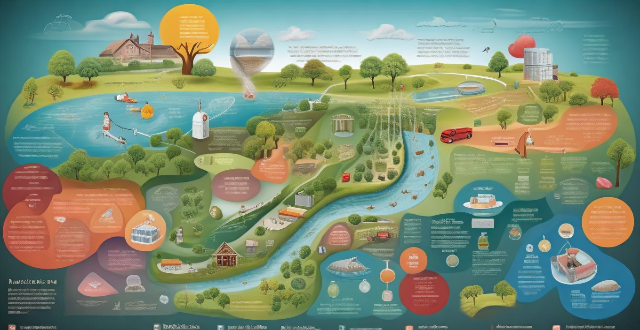Climate data analysis aids in understanding the impact of human activities on the environment by identifying climate change indicators, analyzing atmospheric composition, monitoring land use changes, assessing water resources, and evaluating energy consumption. By collecting and analyzing various types of climate data, scientists can identify patterns and trends that help them understand how human activities are affecting the planet. This information is critical for developing strategies to mitigate the negative impacts of human activities on the environment and promote sustainable development.

How Climate Data Analysis Aids in Understanding the Impact of Human Activities on the Environment
Climate data analysis plays a crucial role in understanding the impact of human activities on the environment. By collecting and analyzing various types of climate data, scientists can identify patterns and trends that help them understand how human activities are affecting the planet. In this response, we will explore some of the ways in which climate data analysis aids in understanding the impact of human activities on the environment.
Identifying Climate Change Indicators
One of the primary ways in which climate data analysis aids in understanding the impact of human activities on the environment is by identifying climate change indicators. These indicators include changes in temperature, precipitation, sea level, and extreme weather events such as hurricanes, droughts, and floods. By tracking these indicators over time, scientists can determine whether human activities are contributing to climate change and what specific impacts they are having on the environment.
Analyzing Atmospheric Composition
Another way in which climate data analysis aids in understanding the impact of human activities on the environment is by analyzing atmospheric composition. Scientists use various instruments to measure the concentration of greenhouse gases such as carbon dioxide, methane, and nitrous oxide in the atmosphere. By comparing these measurements with historical data, scientists can determine whether human activities are contributing to an increase in greenhouse gas concentrations and what impact this is having on the environment.
Monitoring Land Use Changes
Land use changes are another important factor that affects the environment. Climate data analysis helps scientists monitor changes in land use patterns, such as deforestation, urbanization, and agriculture expansion. By analyzing satellite imagery and other data sources, scientists can identify areas where land use changes are occurring and assess their impact on the environment. For example, deforestation can lead to soil erosion, loss of biodiversity, and increased carbon emissions, all of which have negative consequences for the environment.
Assessing Water Resources
Water resources are essential for human survival and ecosystem health. Climate data analysis helps scientists assess water resources by monitoring changes in precipitation patterns, river flow rates, and groundwater levels. By analyzing these data sources over time, scientists can identify areas where water resources are being depleted or contaminated due to human activities such as industrial pollution or agricultural runoff. This information is critical for developing strategies to protect and manage water resources sustainably.
Evaluating Energy Consumption
Energy consumption is a major driver of climate change. Climate data analysis helps scientists evaluate energy consumption patterns by analyzing data on energy production, consumption, and efficiency. By comparing these data with historical trends, scientists can identify areas where energy consumption is increasing rapidly and assess the potential impact on the environment. For example, increased reliance on fossil fuels can lead to higher greenhouse gas emissions and air pollution, both of which have negative consequences for human health and the environment.
In conclusion, climate data analysis is a powerful tool for understanding the impact of human activities on the environment. By collecting and analyzing various types of climate data, scientists can identify patterns and trends that help them understand how human activities are affecting the planet. This information is critical for developing strategies to mitigate the negative impacts of human activities on the environment and promote sustainable development.